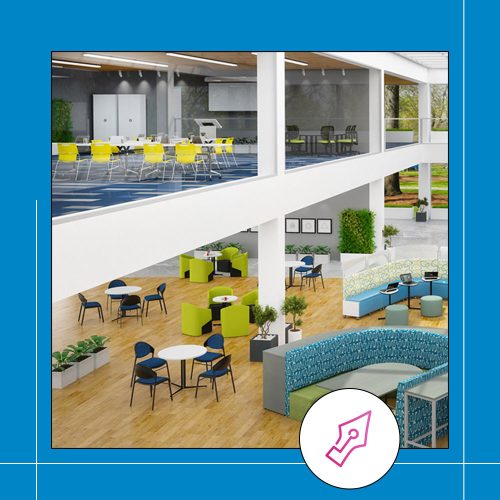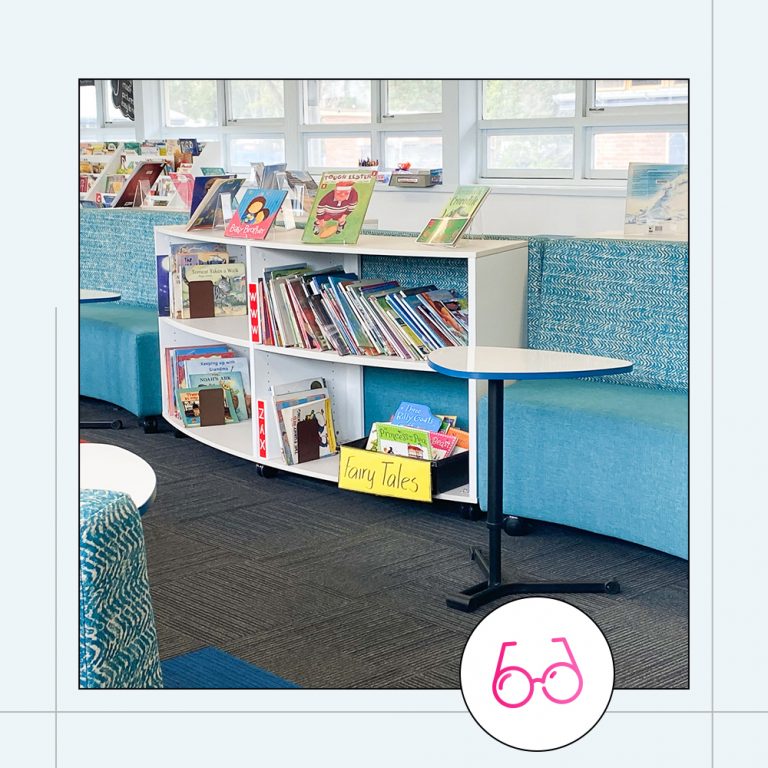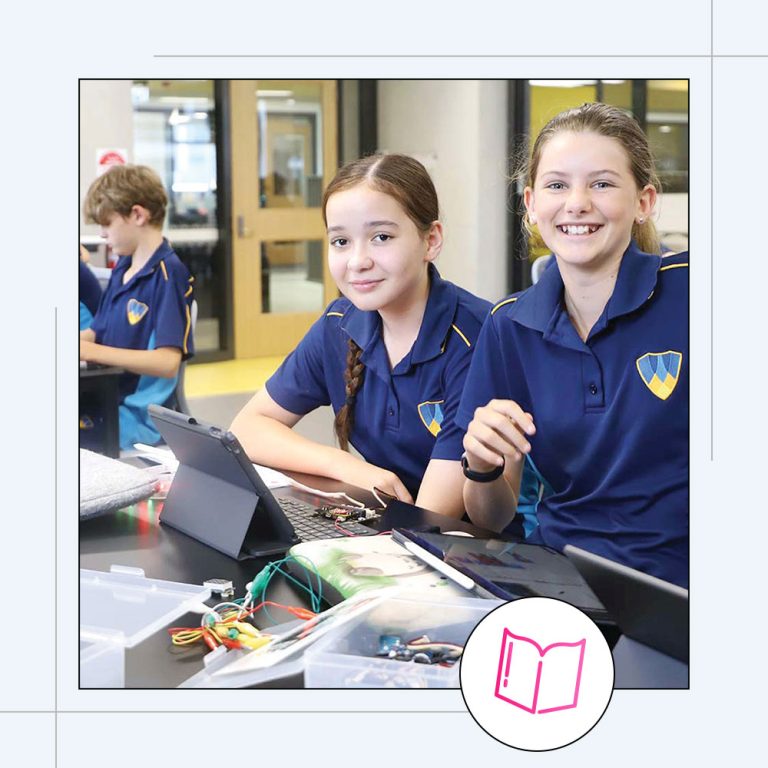By Prakash Nair, Founding President & CEO of Fielding Nair International
It’s a surprising fact that the top universities in the world actively recruit home-schooled students for their freshman class. The reason they do so is because these students have primarily been free to study what interests them most, and have “learned how to learn” while doing so. (Business Insider, Chris Weller, 2015)
While standardised tests are too often the criteria upon which education outcomes are measured, acceptance into top post-secondary institutions is another good way to measure student outcomes for secondary schools. This criterion is an accurate gauge about the effectiveness of schooling.
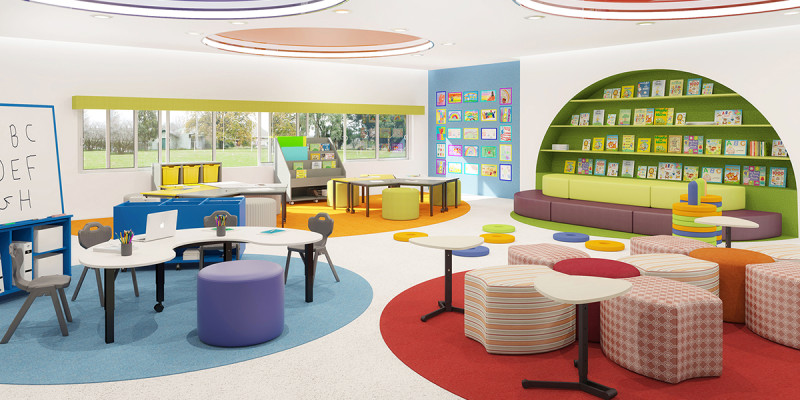
What Kind Of Learning Do Students Need?
It goes beyond celebrating test-taking skills by also demonstrating the real-world value of student-directed learning.
My clients include a wide range of school communities around the globe, from renowned IB (International Baccalaureate) schools to charter schools that serve challenged neighbourhoods.
Despite their striking differences, they tend to have one thing in common;
They agree that engaged students are motivated students and that engagement comes from involvement in activities that are of personal interest to them. In this sense, learning is really a by-product of passion for a subject.
Yet the traditional school setup is single-mindedly focused on the imparting of disjointed information in a variety of subjects. At the physical level, this philosophy is represented by rows upon rows of identical classrooms where direct instruction is the dominant form of teaching.
This system – both the hardware and software of education – is almost perfectly designed to snuff out a student’s natural curiosity and constrain learning to homogenous input and output.
Perhaps a dubious benefit of this system is that in its complete failure to inspire, it motivates budding entrepreneurs to check out emotionally, and often physically, from school and invent things in their garages instead.
So, how can schools support student-driven learning and create the kind of lifelong learners that society needs?
How can they be even better than the homeschool environment?
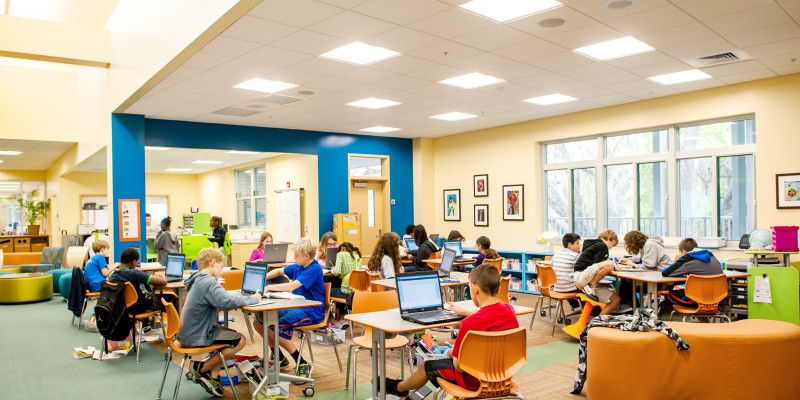
What Kind Of Spaces Do Students Need?
The answer is to provide amenity-rich settings for learning that foster exploration, and Learning Communities that are the right size to support the emotional needs of learners.
“While typical classroom-based schools are designed to produce people with a uniform knowledge and skill set, student-driven learning spaces are designed to support individuals with varied needs, interests and talents.”
Rather than double-loaded corridors with classrooms the same size, Learning Communities contain a variety of spaces and amenities, and serve 100 – 150 students. A variety of room sizes with permeable boundaries supports learning beyond the lecture mode, enabling multiple space formations that are acoustically separate when needed.
Teachers don’t “own” any of these learning spaces, but share their professional office, using it for planning and assessment.
Students and teachers can then select the proper space and furnishing arrangement for their learning cycle as it changes throughout the day.
The beauty of the Learning Community model is that it can be used by institutions of any size, from a small charter school to a large public high school, since the scale of the school is broken down so students always feel they are part of an intimate community of peers and adults.
Learning Communities also typically include learning studios for large group work, a commons area, small group rooms, and creative “DaVinci studios” for hands-on work and experimentation, all with a variety of flexible furnishings.
These might include:
- Soft seating for comfortable reading
- Tall seating with tech bars
- Adjustable tables with ergonomic seating for group collaboration
- Whiteboards for brainstorming sessions
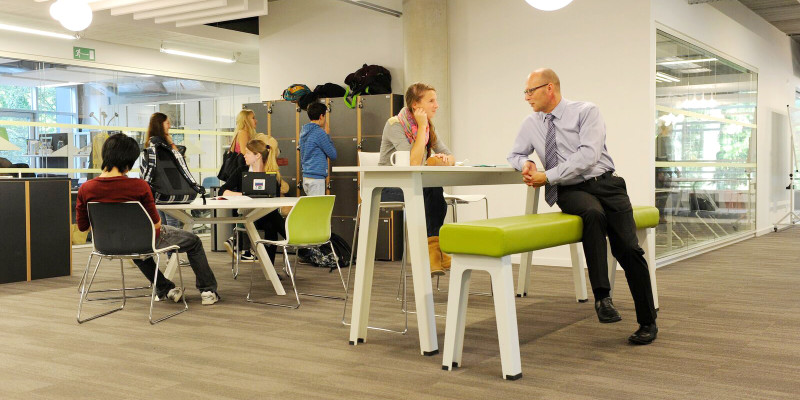
Case Study: International School Of Brussels
Many International Baccalaureate schools are starting to use this model, often doing affinity subject groupings that share amenities and spaces.
The International School of Brussels is an English-language international PreK-12 school that educates 1,500 students from 62 countries.
Their high school is organised into learning communities by curriculum themes, and individualised programs are developed by each student.
Beyond the rigours of the IB programming, students are encouraged as well-rounded individuals to follow their interests in the arts, performance, and music studies.
Like homeschoolers, ISB students are actively recruited by top universities around the world, including;
- École Polytechnique Fédérale de Lausanne
- Erasmus University Rotterdam
- Hong Kong University for Science and Technology
- Johns Hopkins University
- King’s College, London
- Marquette University
- New York University
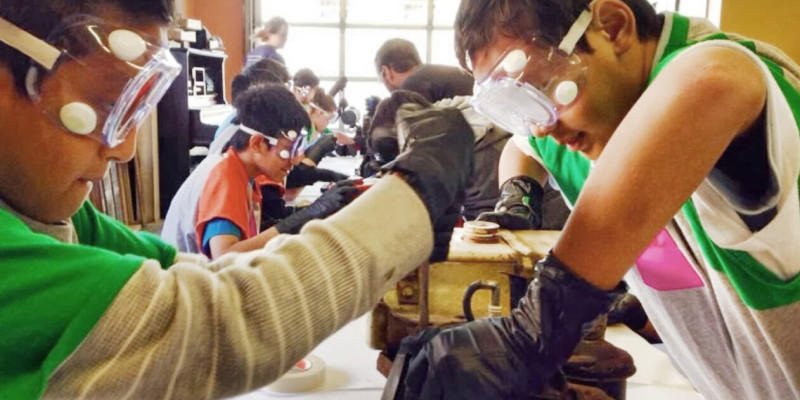
Case Study: Venture Academy, Minneapolis
In sharp contrast to ISB, Venture Academy is a charter middle and high school serving students who have not had success in the local public-school system.
With 90% of the student body living in poverty, many Venture Trailblazers are three to four grade levels behind their peers when they start at the school.
Personal learning dashboards allow students to pursue their own interests while learning, and keep track of their progress.
This software was designed by Facebook programmers, and Venture is the single user in Minnesota. But the dashboards aren’t the only unique feature of the school.
Venture encourages students to pursue areas of passion Case Study: Venture Academy, Minneapolis through experiential enrichment classes like robotics, web development, music in digital media, visual arts, and physical education.
Varied spaces in the school allow for amenities like maker spaces, 3D printers, and programming labs. At Venture, the Learning Community model provides more than a place for exploration; it creates a safe and encouraging environment for young people with challenging life situations.
One exciting sign of success came in March 2016 when a team of four middle school Trailblazers beat out ten adult teams at a Start-up Accelerator design competition in Minneapolis.
Conclusion
While case studies like these demonstrate the positive effect of student-driven learning spaces, there is also hard data that supports their impact.
For example, in a 2011 study published by the American Educational Research Journal, entitled “Problem-Based Learning in K-12 Education,” Clarice Wirkala and Deanna Kuhn document a 200% – 500% improvement in learning retention with authentically student-driven, enquiry-based learning.
More proof that schools should be places students can’t wait to get to every morning, where they are eager to explore and master the things that matter the most to them.



